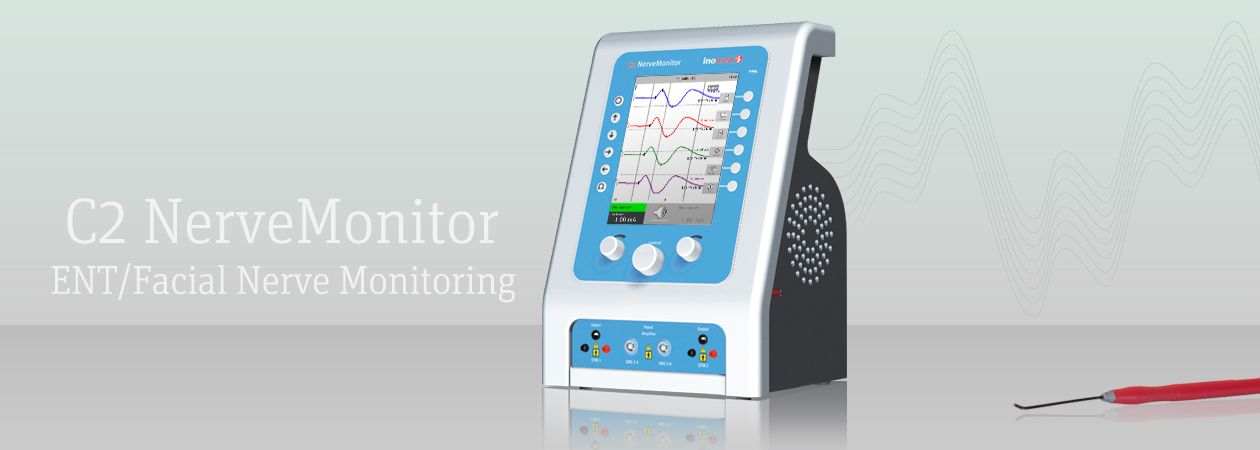
Intraoperative neuromonitoring makes an important contribution to the localisation and functional monitoring of nerves and to the intraoperative preservation of nerve function. In ENT surgeries, for example involving the parotid gland, neuromonitoring is of great value. By sparing the nerves, the risks associated with the interventions can be considerably minimised.
ENT surgery in particular, demands a fine and cautious approach by the surgeon to produce the best functional and cosmetic results. To avoid damaging the nerve branches inside the parotid gland and its surrounding structures, the C2 NerveMonitor in ENT surgery offers intuitive channel identification through individual acoustic signals. The spontaneous activities of the nerves and the muscle contractions of the nerve branches are represented acoustically and visually by specific localisation.
Neuromonitoring by inomed supports the surgeon among other things in tympanoplasty, the placement of a cochlear implant, and in mastoidectomy when operating near to bony structures; inomed neuromonitoring minimises the risk of nerve injury.
Also, in the field of ENT surgery, manually guided stimulation probes locate the nerve branches for monitoring functionality during the intervention. Bipolar probes offer high selectivity, optimal for identifying nerve branches, while monopolar probes have a broader scope of action and thereby offer the localisation of nerve structures. The electrophysiological signals are recorded by placing electrodes in the relevant indicator muscle. Nerve irritations can cause spontaneous activity in the target muscles, which is indicated visually and acoustically. These activities are stored automatically for documentation and can be commented upon during the course of the operation. The HL7-Ready interface offers automatic synchronisation of the patient data with the hospital network.
The C2 NerveMonitor allows clear acoustic identification of the different channels based on the acoustic signal. The sound of a specific channel is audible for the currently highest EMG amplitude that is identified. This ‘channel ident’ function is available for triggered EMG signals in ENT surgery.